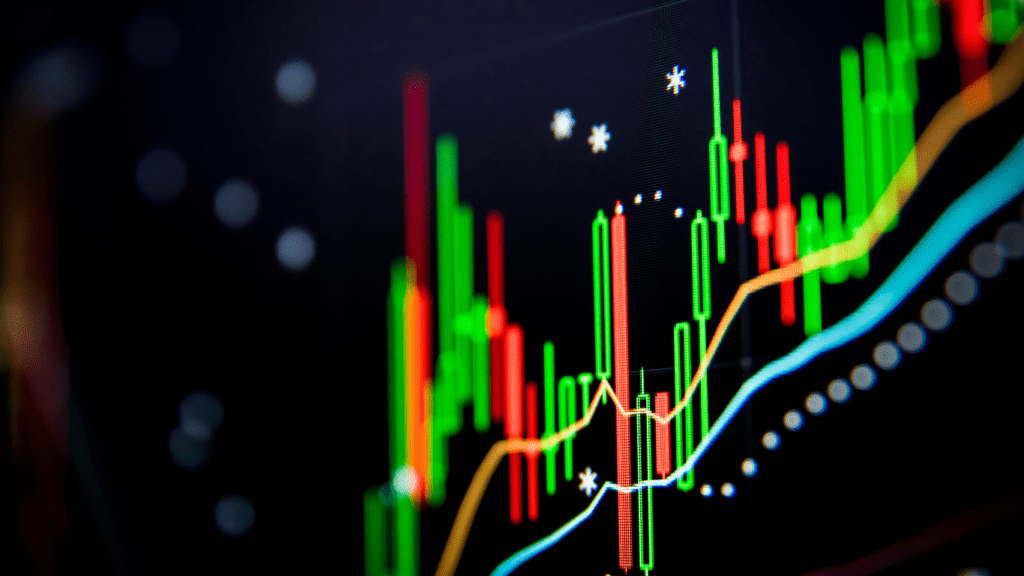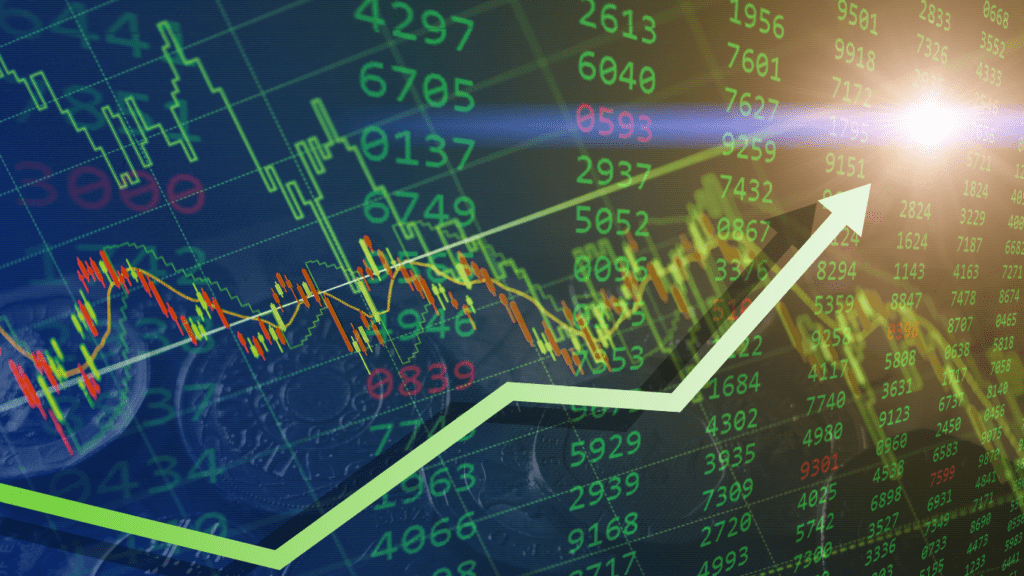The financial markets have a way of keeping us on the edge of our seats, and lately, trading volume spikes have caught everyone’s attention. When volume surges, it often signals a shift in market sentiment—but is it enough to suggest the long-awaited bull run is back? It’s a question every trader and investor is asking right now.
Understanding Trading Volume Spikes
Trading volume spikes represent sudden, significant increases in the number of assets traded within a specific timeframe. These occurrences often indicate heightened market activity and can influence price trends.
What Are Trading Volume Spikes?
Trading volume spikes occur when the traded quantity of an asset surges abruptly and exceeds the average volume over a given period. They often highlight intensified buying or selling, signaling shifts in market sentiment. For example, if a stock averaging 1 million shares traded daily suddenly records 5 million shares, it qualifies as a volume spike. These spikes can accompany major news, earnings reports, or unexpected market events.
Key Indicators of Volume Spikes in the Market
1. Abnormal Volume Ratios
A volume ratio exceeding historical averages signals a spike. For instance, a stock with a 10-day average of 500,000 daily shares trading 3 times this number suggests an abnormal surge.
2. Price Movements
Large price increases or decreases often coincide with volume spikes. A 7% rise in stock value paired with a doubling in volume can reflect strong investor sentiment.
3. Breakouts from Consolidation
When an asset exits a prolonged price range, heightened volume frequently confirms the breakout’s validity. For example, a cryptocurrency trading between $50-$55 might spike in volume upon surpassing $55.
4. Unusual Pre-Market or After-Hours Activity
Significant volume occurring outside regular trading hours may precede daytime spikes. Pre-market trades exceeding typical levels can reveal anticipation of major news.
Monitoring these indicators helps establish whether spikes signify meaningful trends or are temporary market reactions.
Factors Behind Trading Volume Spikes

Trading volume spikes typically result from heightened activity or significant events impacting markets. These factors can reveal shifts in sentiment or indicate broader trends.
Economic Announcements and News
Economic reports and geopolitical developments often drive sudden volume surges. Key data releases like employment figures, inflation rates, or interest rate decisions trigger rapid trading activity. For example, a better-than-expected nonfarm payroll report may lead to heavy buying, while unexpected rate hikes could prompt selling. Breaking news, such as geopolitical conflicts or corporate earnings surprises, also plays a crucial role in sparking trading volume spikes across markets.
Institutional Buying and Selling
Institutional activity contributes significantly to volume fluctuations. Large trades from hedge funds, mutual funds, or pension funds can move markets. For instance, when institutions accumulate shares of a high-growth company, the spike in volume often attracts broader interest. Conversely, heavy sell-offs by institutional players during portfolio rebalancing or risk-off scenarios can lead to sudden drops in asset prices accompanied by high trading volumes.
Retail Investor Behavior
Retail investors, particularly during volatile periods or trending markets, amplify volume surges. Social media-driven trends, meme stocks, or speculative investments often lead to a spike in trading activity. For instance, coordinated buying campaigns promoted via online forums can cause unusual volume in specific assets. Additionally, retail traders reacting to fear or greed in response to price swings contribute to significant short-term volume increases.
Analyzing The Correlation Between Volume Spikes And Bull Runs
Identifying patterns in trading volume provides valuable insights into the onset of bull runs. While volume spikes often accompany bullish momentum, not all spikes translate into sustained uptrends.
Historical Trends and Case Studies
Analyzing past bull runs highlights the role of volume as a precursor to upward trends. During the 2020 rally in technology stocks, trading volume surged around key moments, such as earnings announcements for major tech firms. For instance, Tesla saw its volume triple in July 2020, coinciding with a significant price breakout. Similar patterns emerged during the cryptocurrency bull run of 2021, where Bitcoin and Ethereum experienced sharp volume increases before notable price moves.
However, volume spikes without supportive market sentiment can result in short-lived rallies. In 2018, numerous stocks exhibited brief volume-driven price increases, yet consistent selling pressure led to rapid declines. Historical data underlines the importance of context in measuring the relationship between volume and sustained market trends.
Understanding False Positives in Volume-Induced Bull Runs
Volume surges don’t always indicate genuine bullish reversals. In certain cases, false positives arise due to speculative trading or news events without fundamental backing. For example, in meme stock movements like GameStop in early 2021, trading volumes spiked significantly, yet the price surges were volatile and unrepresentative of broader market conditions.
Another driver of false signals stems from algorithmic trading. Sudden, large-volume trades initiated by algorithms often disrupt market dynamics temporarily. To minimize misinterpretation, I focus on corroborating data like institutional participation, breakout patterns, and macroeconomic indicators when associating volume with potential bull trends.
Tools And Techniques To Monitor Volume Changes
Tracking trading volume changes helps identify market trends and potential reversals. By using specific tools and techniques, I can make informed decisions and minimize risks.
Popular Indicators and Metrics
1. Volume Moving Averages
Moving averages of volume smooth out short-term fluctuations and highlight trends over time. I use the 10-day or 50-day moving average to compare current trading activity with historical patterns.
2. On-Balance Volume (OBV)
OBV measures cumulative buying and selling pressure. When the OBV trend aligns with price movement, it often confirms a strong trend. Divergences between OBV and price may indicate potential reversals.
3. Volume Weighted Average Price (VWAP)
VWAP calculates the average price of an asset weighted by trading volume. It helps identify whether an asset is trading above or below a critical level, indicating buying or selling pressure.
4. Relative Volume (RVOL)
RVOL compares trading volume to the average volume over a specific period. Spikes in RVOL highlight significant deviations from normal activity, signaling heightened interest.
5. Accumulation/Distribution Line
This metric reflects the flow of money into or out of an asset by analyzing both price and volume. A rising line suggests accumulation, while a declining line indicates distribution.
Best Practices for Traders and Investors
1. Combine Volume with Price Action
Analyzing volume alongside price movement provides clearer signals. For example, increasing volume during a breakout confirms market conviction, while low volume raises doubts about sustainability.
2. Set Alerts for Abnormal Volume
I use trading platforms to set alerts for volume exceeding certain thresholds. This approach ensures prompt identification of unusual activity, helping me react quickly.
3. Monitor Institutional Activity
Tracking block trades and regulatory filings reveals institutional participation. Unusual large trades often precede significant price movements.
4. Analyze Market Context
Volume changes should be assessed within the broader market context. I focus on economic announcements, geopolitical events, or earnings reports to explain abrupt spikes.
5. Avoid Overreliance on Volume
Sudden spikes don’t always indicate a bullish trend. I corroborate volume with other technical indicators, such as RSI or MACD, to avoid misinterpretation.
Using these strategies ensures better insights into trading volume dynamics and leads to more informed trading decisions.


 Crypto Trends Reporter
Crypto Trends Reporter

